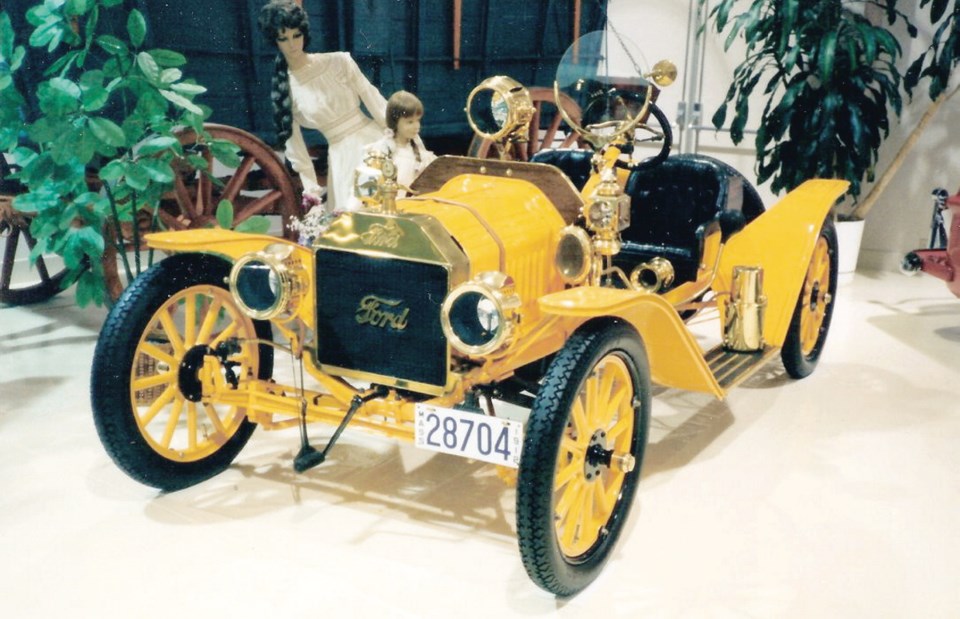Hotrodding, or modifying a stock car for higher performance, didn’t become well known until after the Second World War. It was the appearance of a new publication called Hot Rod magazine in January 1948, launched by a struggling young Californian named Bob Petersen, that gave the sport the voice it needed to flourish.
Rodding had been going on informally almost from the turn of the century. Following its start in the Midwestern United States, the heart of the auto industry, it found its soul in Southern California, where a benign climate, burgeoning car culture and availability of smooth dry lakes for speed runs were its natural environment.
Early hotrodding was often a chaotic, unsupervised activity where impromptu drag races on public roads were common. Lurid publicity by a sensation-loving press gave the sport a decidedly unsavoury reputation.
Although the history of rodding is long, a major turning point came in 1937 with the formation of the Southern California Timing Association. Its mandate was to get racing off the streets and into supervised, formalized venues.
Although other makes were used, the preferred hotrod engine was the Ford V-8 introduced in 1932. It made spirited performance available to everyone, and a hopped up 1932 Ford “Deuce” Roadster with fenders removed and a dropped front axle became the quintessential hotrod.
But in rodding’s early days before the Deuce, the most popular car for hot rodding was the Model T Ford. This may sound strange, because the tall, spindly “Tin Lizzy” that could barely top 72 km/h in stock trim seemed like the furthest thing imaginable from a performance car. But it was cheap and available, and thanks to the use of vanadium steel, stronger than it looked.
The Ford-based hotrods of those early days were known as Model T Bugs, Raceabouts or Speedsters. They were built by young men who had been captivated by cars like Mercer Raceabouts and Stutz Bearcats, but had only Model T budgets.
The Model T Ford was introduced late in 1908, and as with the later V-8, it didn’t take long for fledgling speed equipment suppliers to evolve. This took hold particularly after the First World War, when a rash of mail order shops sprang up offering high-performance parts that would totally transform Henry Ford’s basic transportation.
Coachbuilders soon obliged with special aluminum and steel bodies, and the whole Model T hotrod thing took off. By the 1920s, even the most remote but mechanically talented farm boy could get parts by mail order and build a T-rod in his barn or driveshed. By the time serious builders got finished, there often wasn’t much left of the original Ford except the frame, usually lowered, and the planetary transmission and cylinder block. But it was enough to keep it a Model T.
The spindly Model T’s three-bearing Ford crankshaft was replaced by a sturdier, counterbalanced shaft, and engine lubrication was improved with oil-dipper connecting rods. An overhead-valve cylinder head conversion was a must for deeper breathing. Battery ignition or a non-Ford magneto gave a stronger spark and eliminated the T’s heavy flywheel magnets for quicker engine response.
For improved cooling, the Model T’s basic thermo-siphon system was augmented by a belt-driven water pump. Dual downdraft carburetors let the engine breath more air and fuel.
Popular suppliers of overhead-valve conversions were Riley, Roof and Rajo, and one of the favourites, Frontenac. Frontenac Motor Corp. was headed by none other than Louis Chevrolet, the talented practical engineer who designed the first Chevrolet. After creating it and giving it his name, he and GM founder William Durant had a falling out. Chevrolet left Durant in 1914 and went on to gain fame as a race car designer and manufacturer of “Fronty” Model T overhead valve heads.
This mechanical metamorphosis of the T was clothed in a two-seater roadster body, sometimes with a pointed tail, supplied by companies like F.O. Ames, Universal Body Corp. and Craig-Hunt. Smaller wheels from Dayton or Kelsey-Hayes were usually fitted to banish the spindly appearance, and replacing the planetary steering gear, often with a Franklin unit, gave much better control.
The lighter weight, increased power and better gear ratios gave the humble T a startling performance increase. Top speeds of 129 km/h were not uncommon. And zero-to-96 km/h times of 20 seconds were good performance estimates in an era when many cars couldn’t even reach 100 km/h.
Faster hotrods with more cylinders superseded the Model T specials, but in their heyday a good one could challenge many of the fastest cars around. Just as a stock Model T was everyone’s transportation, a hopped-up version was the poor man’s Stutz Bearcat or Mercer Raceabout.
